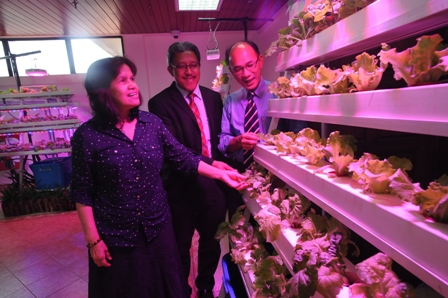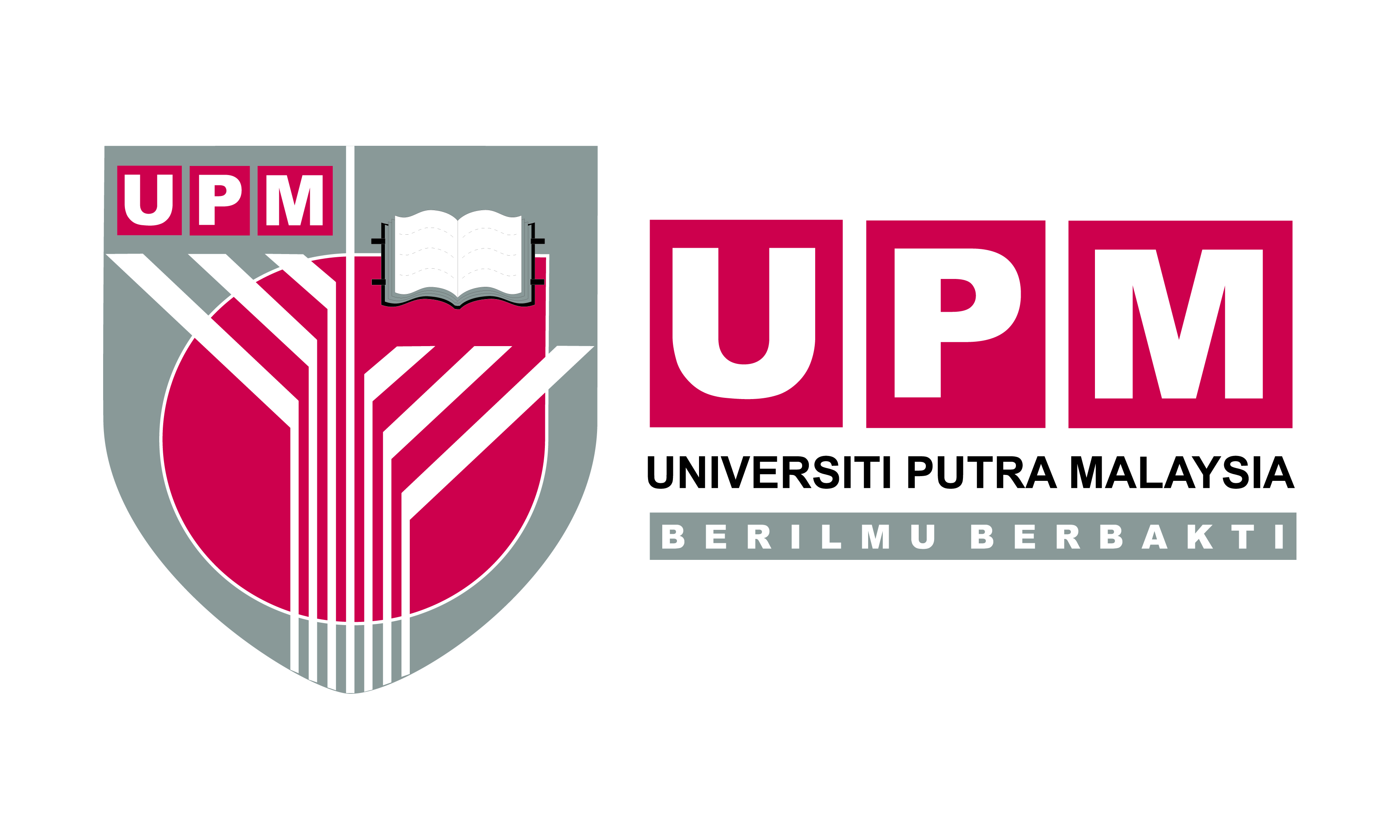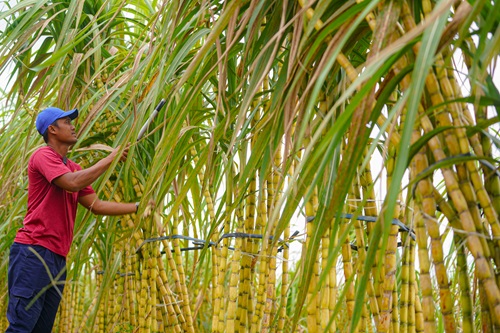By Prof Datin Paduka Dr Fatimah Mohamed Arshad

SERDANG, 25 Feb (UPM) - The fluctuation in the prices of food is a market norm. This phenomenon is widely accepted by the general population.
In fact, the market needs prices to go up and down to enable the problems of product surplus or shortage to be resolved. That is, when dumping occurs, only a price reduction will enable the surplus stocks to be sold, and vice versa. This is the basic function of pricing.
But when the price rise exceeds the 'normal' level, or there is an excessive increase in prices, it is difficult for the consumers, especially those in the lower income group, to accept such a situation. Such public anxiety is actually reasonable.
This is because lately, food prices had risen to a level that is considered abnormal or 'excessive'. The percentage increase is much higher than what was seen previously.
When studying the price trend in the press or on TV, one has to be cautious. The graph incorporates the long-term price trend, cycle, season and short-term surprises. Each of them is determined by their own factors.

The long-term upward trend is caused by the technology and population factors. The seasonal pattern is due to the fact that some commodities such as the durian, ' dukung' have their own fruiting season. The daily variation is due to the perception and speculative factors.
Thus, it is not surprising when the Prime Minister stated that the price of 'kangkung' or water spinach had dropped, this was because he probably looked at the daily price trend.
But the price trend for 'kangkung' may rise in the long run. This is because the production cost for 'kangkung' is not static.
The question that arises is: Could the increase be due to the imbalance in supply and demand or due to the middlemen or traders taking the opportunity to make quick profit when the market situation shows an upward price trend.
Pointing fingers at the middlemen is the easy way out to answer the question. Only data can answer the question, that is, by comparing the production cost and the profit. It's that simple. But so far, data is apparently not the top priority. A study on the dynamics of the current environment explains that the price rise is due to a combination of fundamental and technical factors.
The fundamental factor refers to the interaction between supply and demand. The technical factor, on the other hand, refers to the perceptions of the producers, entrepreneurs and consumers on the market trend and, what is more important, the action that they take. When demand chases supply, the price will rise. And when supply exceeds demand, the price will drop. This is the law of the free market.
The rise in living standard, the population increase (where more than two million are immigrants), the differing lifestyle and the changing nutrition pattern had pushed up the demand for all products and food items.
Among the low-income consumers, the demand for rice increases together with daily food items such as vegetables, fruits, fish and chicken. Among the high-income group, there will be an increase in the demand for quality, rich in nutrition and instant food. These include chicken, dairy products, fresh vegetables and imported fruits from temperate countries, imported beef and lamb, as well as processed food.
But the domestic food production cannot meet the demand for food. Data shows that food production in Malaysia does not keep pace with the demand and there is a serious dependence on imports. The manufacturing sector is still at the old pace especially in terms of technology (production and post harvest) to the extent that supply is unstable.
This is because without appropriate technology, producers cannot control diseases or low productivity, post harvest losses are high and cannot tackle the problem of adverse weather.
Certification and quality control is still lagging far behind those practised in Thailand.
Productivity in terms of fruits and vegetables in Malaysia is among the lowest in the ASEAN region.
There is still much to be desired in terms of development in the production of beef and lamb. When production is still at the traditional stage and on a small scale, any unexpected incidents such a disease outbreak or bad weather will lead to erratic supply in terms of quantity and quality.
We frequently hear of dumping of fruits such as the durian, dukung and rambutan where the price is so low because there is no channel for processing. The usage for processing is so minimal. The erratic production of food items is exposed to inflexible demand or slow movements when price levels change. Thus, it is not surprising that there is a drastic rise in prices due to 'shocks' such as the flood, the outbreak of an epidemic or other challenges.
In short, food production in Malaysia does not have the capacity to withstand 'shocks' because it is very sensitive to natural elements and market changes. Whatever innovation made is inadequate to overcome this problem.
Food imports appear to be in abundance, that is, the supply is guaranteed and can be sourced from various producing countries. Indirectly, the availability of imports does not drive the national food sector to carry out reforms.
Malaysia opts to import cheap labour from abroad to work in the vegetable farms or plantations rather than improve efficiency and productivity in terms of the land, labour and capital. It overcomes the problem of labour shortage in the short term but does not increase productivity in the long term.
The rise in food prices is also induced by the rise in prices of inputs such as fertilisers, chemicals, land, labour and machinery. Although the government protects the prices of petrol and diesel, the price of fertilisers had risen by 70 per cent within the last two years and wages had also gone up.
In an uncertain and risky food market, perception is a major consideration for producers, entrepreneurs and consumers in making decisions and taking action. Industry players read and form perceptions on any announcement on the implementation of the GST (Goods and Services Tax), withdrawal in sugar subsidy, the rise in the cost of inputs and wages and the plan to withdraw the various subsidies especially for petrol in stages.
There is a strong possibility that traders take precautionary measures by raising prices to minimise the impact of all these changes on their business. The factor above is easy to defend in explaining the symptoms of price increases.
However, a serious factor that many people do not realise is the sistemic factor that had spread for so long, that is, the marginalisation of the food sector due to the emphasis on industrialisation since the 1980's. As had been proven in 2008, the shocking crisis had exposed the weak resilience of the national food sector to the extent of jeopardising food security.
What option is there for Malaysia to curtail the price increases? As usual, short term solutions can be implemented easily.
But a sustainable solution calls for good planning and strong political commitment.
Short term strategies include importing food products and commodities. Supply can be considered stable because of the increase in exporting countries such as China, India, Vietnam, and Myanmar besides the established markets such as Thailand.
Price monitoring and control of food items are certainly good strategies, but they need support such as a competitive market, an efficient market information system and consumer awareness and sensitivity.
In the long run, what is sustainable and permanent is a dynamic and growing food industry structure. The structural and sistemic problems that restricted the growth of this sector in the past decades must be resolved.
The experiences of Taiwan, Korea, Thailand and west Nigeria showed that the prime mover for growth was technology. Technology can help in terms of cost effectiveness, productivity, and high added value.
Challenges such as the strong resource attraction from the industrial and non-food sectors must be tackled with a greater injection of infrastructural investment, incentives, institutional support and R&D (research and development). All these have been recorded in the National Agriculture Policy, but they need a more serious emphasis and a new approach. -- UPM
The writer is the Director
Institute of Agricultural and Food Policy Studies
Putra Infoport Serdang 43400
Universiti Putra Malaysia
Selangor Malaysia
fatima@upm.edu.my or mafatimah@gmail.com
-- ao/kgo






